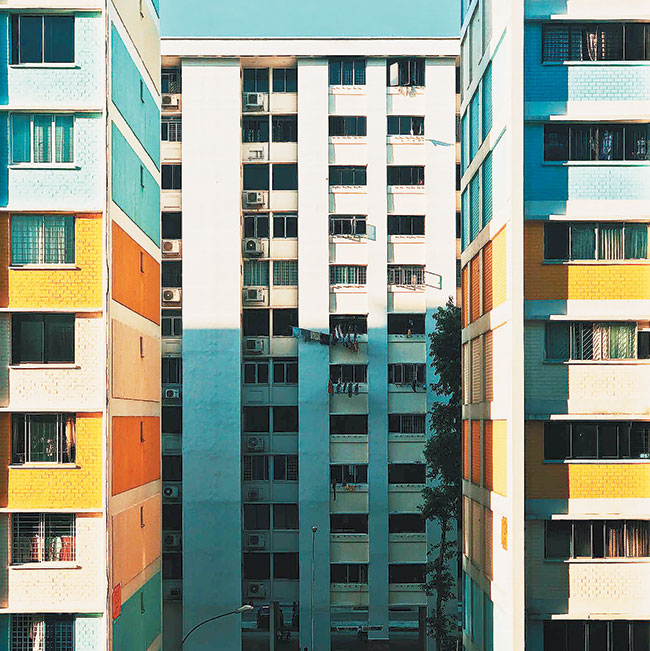Have you encountered any problem in regard to your condo unit’s floor area? Do you know how it is measured?
In my experience, a condo unit’s floor area is one of the sources of misunderstanding among parties, albeit limited. Aggrieved parties have raised such concern with their sellers and, in certain instances, asked for proportionate price adjustment.
Definitions
Presidential Decree No. 1096 or The National Building Code of the Philippines promulgated in 1977 defines floor area as “the area included within the surrounding exterior walls of a building or portion thereof, exclusive of vent shafts and courts. The floor area of a building or portion thereof not provided with surrounding exterior walls shall be the usable area under the horizontal projection of the roof or floor above”.
The above notwithstanding, Republic Act No. 4726 or the Condominium Act, enacted in 1966, states that: “Unless otherwise expressly provided in the enabling or master deed or the declaration of restrictions … the boundary of the unit granted are the interior surfaces of the perimeter walls, floors, ceilings, windows and doors thereof. The following are not part of the unit – bearing walls, columns, floors, roofs, foundations and other common structural elements of the building; lobbies, stairways, hallways, and other areas of common use, elevator equipment and shafts, central heating, central refrigeration and central air-conditioning equipment, reservoirs, tanks, pumps and other central services and facilities, pipes, ducts, flues, chutes, conduits, wires and other utility installations, wherever located, except the outlets thereof when located within the unit. “

What areas are included?
Given the Building Code’s definition and added flexibility provided in the Condominium Act, many developers have adopted the liberal measurement provisions from globally-accepted references prepared by the American National Standards Institute, Building Owners and Managers Association International, and International Property Measurement Standard, among others.
A few of these common provisions are as follows:
a. The floor area of the unit is the total area bounded by the exterior surface of all exterior walls, i.e. wall thickness is included, the center lines of the party walls separating one unit from another, and the exterior surface of the wall enclosing the condominium unit facing the corridor, utility or common area.
b. Unit’s area is usually defined as a gross figure and includes spaces like mechanical shafts or chases, or structural components found within the unit.
c. The space occupied by the stair is included in the calculation, often measured once only even if it occupies an area equivalent to two floors.
d. Plan measurements may be rounded off to the quarter, half or full integer.
However, measurement of balconies and other outdoor spaces varies greatly. Many include the whole area in the total floor size while others consider only half of the actual floor area. In limited instances, some developers completely disregard the balcony size in the total area calculation.
Conflicts in size, how resolved
Even a minimal discrepancy in size can have significant impact, especially if the total area is small or the transaction value is huge.
To resolve such problem, developers usually provide buyers with the definition and/or the measurement methodology used, often found in the master deed of restrictions or equivalent document. Alternatively, and with the agreement of both parties, a geodetic engineer or surveyor may be hired to physically measure and validate the area based on the agreed definition.

Meanwhile, the Civil Code of the Philippines provides guidance on how to resolve such differences:
a. If the sale is based on a lump-sum price and not at the rate of a certain sum per square meter or square foot, there shall be no adjustment in the purchase price, even if there is a discrepancy in the area.
b. If the sale document includes a statement that the total purchase price is based at a certain price per square meter or square foot, and the property handed over is bigger – the buyer may accept the area per the contract and reject the excess; or if the buyer accepts the whole area, the buyer must pay for the excess area at the contract’s price per square meter or square foot. However, if the property handed over is smaller – the buyer may choose between proportional reduction of the purchase price; or the recession of the agreement provided that the shortfall in the area not be less than one-tenth of the contracted area.
c. Any action arising from these concerns shall prescribe within six months, counted from the date of delivery.
References used include Presidential Decree No. 1096 (National Building Code of the Philippines), Republic Act No. 386, as amended (Civil Code of the Philippines) and Republic Act No. 4726 (Condominium Act).
* * *
Henry L. Yap is an Architect, Environmental Planner, Real Estate Practitioner and former Professorial Lecturer.
